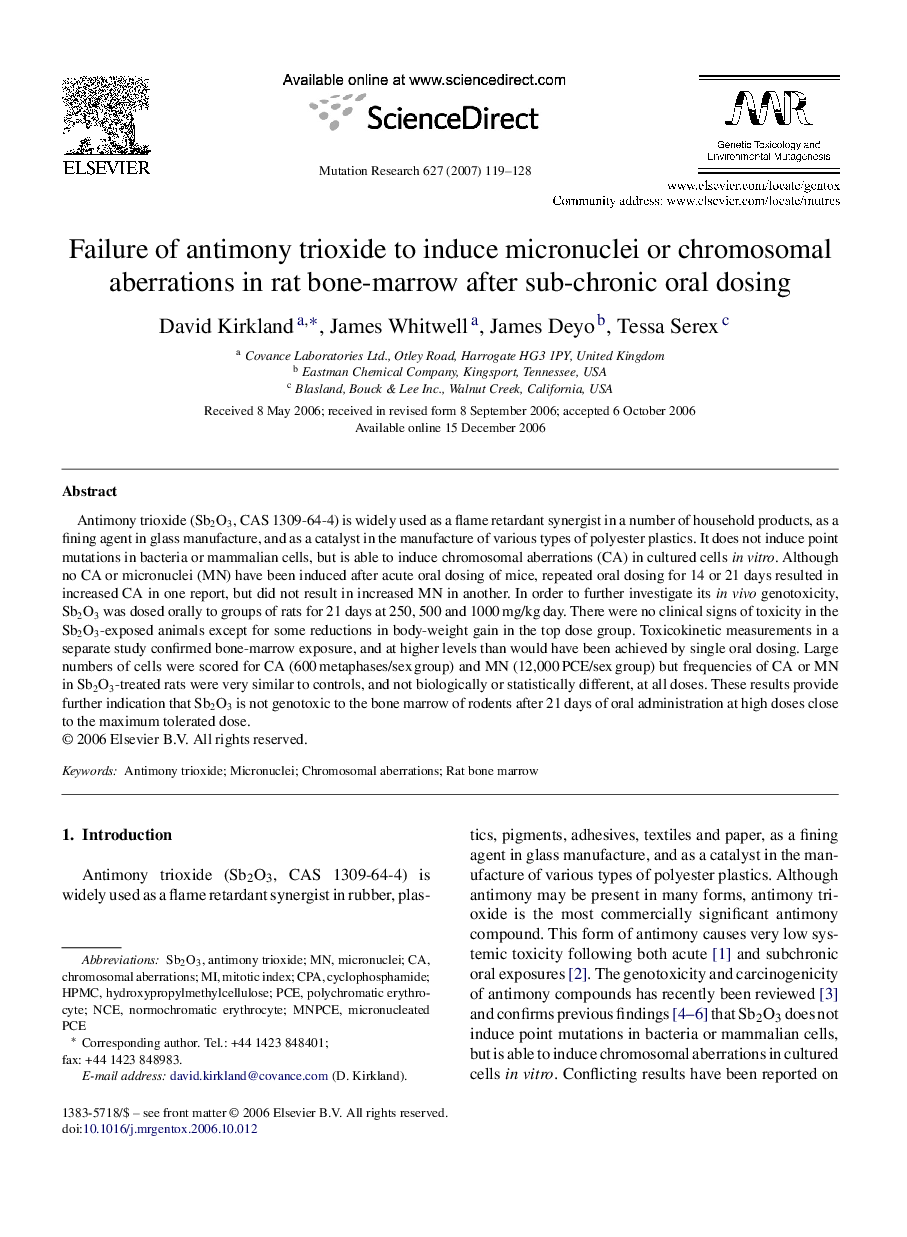| Article ID | Journal | Published Year | Pages | File Type |
|---|---|---|---|---|
| 2149233 | Mutation Research/Genetic Toxicology and Environmental Mutagenesis | 2007 | 10 Pages |
Antimony trioxide (Sb2O3, CAS 1309-64-4) is widely used as a flame retardant synergist in a number of household products, as a fining agent in glass manufacture, and as a catalyst in the manufacture of various types of polyester plastics. It does not induce point mutations in bacteria or mammalian cells, but is able to induce chromosomal aberrations (CA) in cultured cells in vitro. Although no CA or micronuclei (MN) have been induced after acute oral dosing of mice, repeated oral dosing for 14 or 21 days resulted in increased CA in one report, but did not result in increased MN in another. In order to further investigate its in vivo genotoxicity, Sb2O3 was dosed orally to groups of rats for 21 days at 250, 500 and 1000 mg/kg day. There were no clinical signs of toxicity in the Sb2O3-exposed animals except for some reductions in body-weight gain in the top dose group. Toxicokinetic measurements in a separate study confirmed bone-marrow exposure, and at higher levels than would have been achieved by single oral dosing. Large numbers of cells were scored for CA (600 metaphases/sex group) and MN (12,000 PCE/sex group) but frequencies of CA or MN in Sb2O3-treated rats were very similar to controls, and not biologically or statistically different, at all doses. These results provide further indication that Sb2O3 is not genotoxic to the bone marrow of rodents after 21 days of oral administration at high doses close to the maximum tolerated dose.
